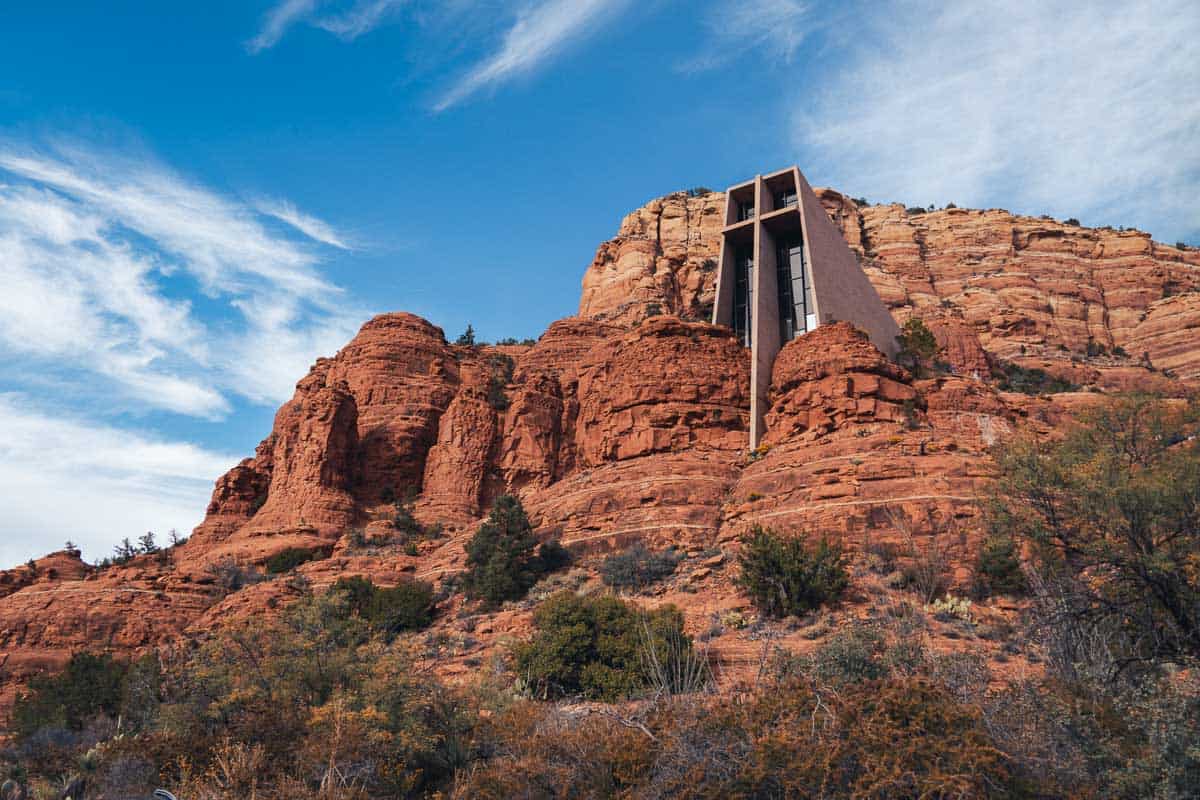25 Reasons Why Arizona Should Be on Your Travel Bucket List

This sizzling Southwestern state is bursting with some of Americas most famous landmarks and a perfect escape when the rest of the country is in deep snow. According to Travel + Leisure, Arizona hosts four of the top 15 destination spas in the USA. This random fun fact is just one of many obscure reasons Arizona is a notable American state.
As someone who vanlifed for two years and has had the privilege of exploring 65 countries, I can confidently say that Arizona is one of my absolute favorite spots on the planet. From the colors of its slot canyons to its Native American cultural heritage, there is something special about this state.
But what exactly makes it such a popular destination? Let’s explore some of the things that Arizona is famous for.
What Is Arizona Known For?
Arizona is a state known for the five C’s (explanation below), desert landscapes, a few architectural feats, a colorful history, and a few famous travel destinations.
I’ll be breaking down the following post into those individual categories.
1. Arizona’s Five C’s
For decades, Arizona’s schoolchildren have been educated on the Five Cs:
- Copper
- Cattle
- Cotton
- Citrus
- Climate
These elements make up the majority of the economy, providing financial stability to its past generations. Nevertheless, Arizona is transitioning from a mining and agriculture-based economy to a technology and service-oriented one—just like the rest of America.
2. Climate
Arizona is a dynamic state with a variety of climates and temperatures. From Tucson’s dry desert air to Flagstaff’s snowy winters, it draws tourists year-round.
Phoenix is actually the sunniest place in the United States, experiencing nearly 211 sunny days a year. At the same time, Flagstaff may get an annual snowfall of 100+ inches. The highest recorded temperature in Arizona was 128°F (53°C) in Lake Havasu City on June 29, 1994, and the lowest was -40°F (-40°C) in Hawley Lake on January 7, 1971.
Even with its unique topographical features and diverse climates, Arizona is probably best known as an escape from the winters of northern America.
Natural Wonders Arizona is Known For
Arizona is known for having a high density of natural wonders, with 22 national parks and monuments within its borders.
3. Grand Canyon National Park (One of the 7 Natural Wonders of the World)
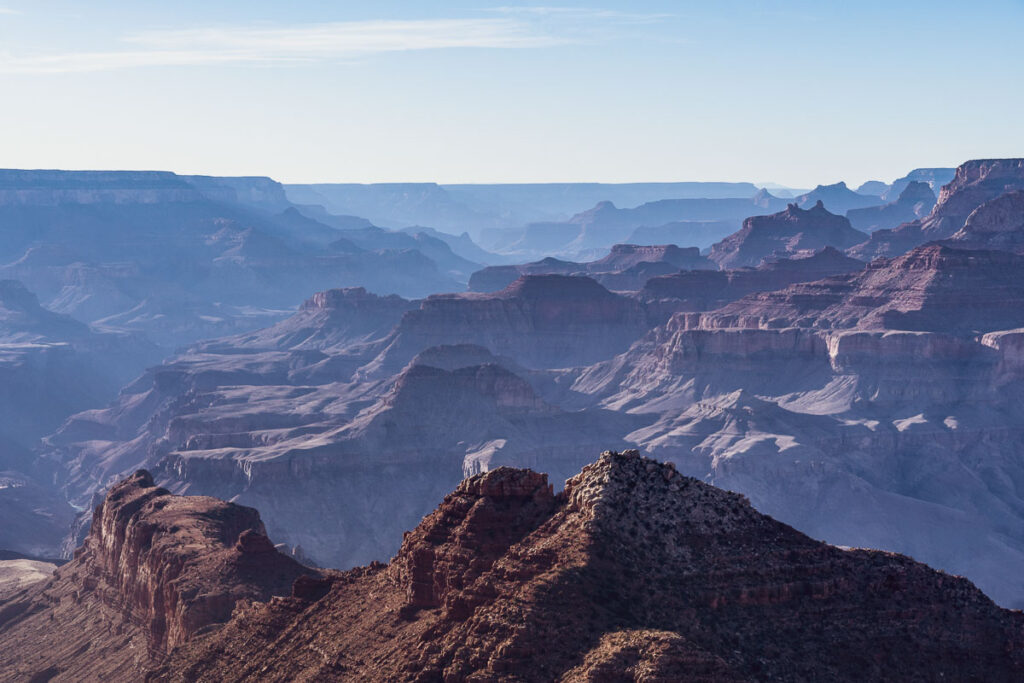
Did you know that the immense Grand Canyon is a staggering 277 miles long? Although neither the biggest nor the deepest canyon, it is one of the Seven Natural Wonders of this world. Spanning from Arizona to Utah, this landmark has been a national park since 1919 and attracts millions of visitors annually.
The park is divided into three sections: the north, west, and south rims. As a result of the canyon separating them, it can take hours to drive between each section. Many people choose to take guided canyon tours from nearby cities like Las Vegas and Phoenix.
In all zones, hundreds of miles of trails around the rims and within the canyon provide ample opportunities for hiking adventures. Furthermore, thrilling whitewater rafting trips by permit only have become highly sought after, with waiting periods sometimes up to 10 years!
4. Petrified Forest National Park

Vast stretches of colorful vistas and native wildlife fill Petrified Forest National Park, accompanied by surreal badlands, astonishing buttes, and majestic mesas along its scenic drive. Scattered throughout the park, its iconic petrified wood logs lie fossilized in various sizes and colors. Some experts estimate these ancient trees are a staggering 225 million years old!
Additionally, the park also contains a large number of Native American sites, like petroglyphs and ancient markings.
5. Horseshoe Bend
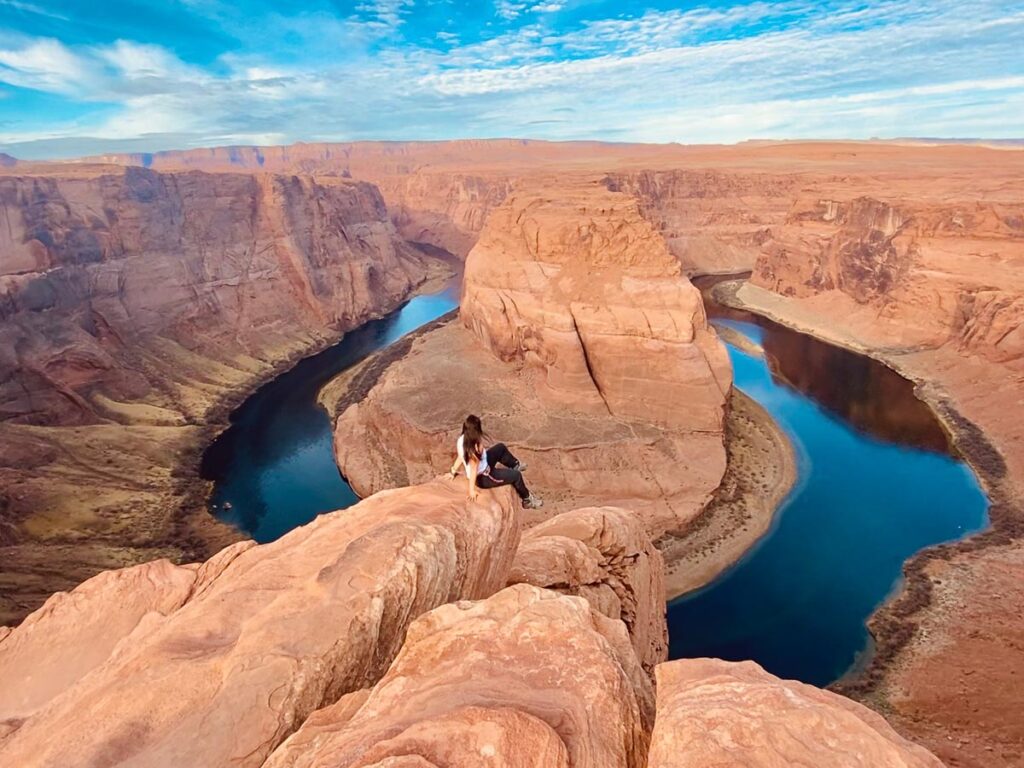
Arizona’s Horseshoe Bend in the Colorado River is one of the most photographed places in America. This iconic Page destination features awe-inspiring 1,000-foot high sandstone cliff views. The river below resembles a U-shaped horseshoe, giving the place its name.
Visitors to Horseshoe Bend can take a short 1.2 mile hike to the overlook, just a few miles from the town of Page. You can get as close to the edge as you dare. Kayakers can also purchase a backhaul service and paddle past from below.
6. Slot Canyons
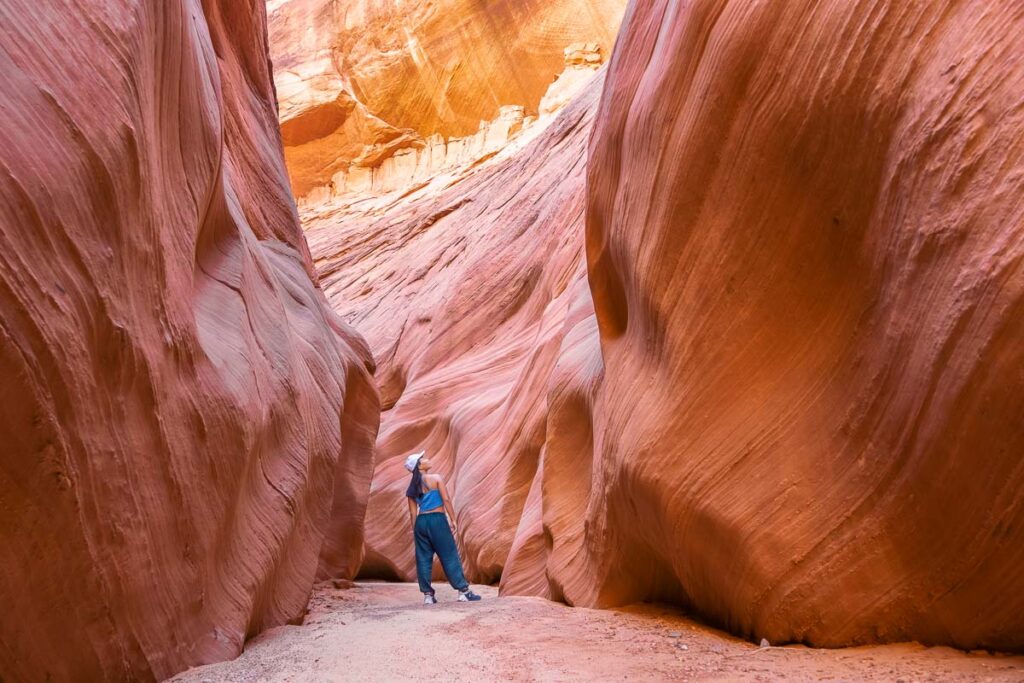
The stretch from Las Vegas to Page is home to some of the most stunning slot canyons in the world. Even if this term is foreign to you, chances are high that a popular one has graced your computer screensaver, the million-dollar shot of Antelope Canyon near Page.
Slot canyons are a series of narrow canyons cut into sandstone by water erosion thousands of years ago. The canyon walls are streaked with vibrant shades of orange, red and yellow, providing an enchanting backdrop for anyone visiting the site.
Tip! Many of the famous slot canyons reside on Navajo Nation Land and require special permits or guided tours. Many people also take a day trip tour from cities like Las Vegas or Phoenix.
7. Monument Valley

Recognize this image? Monument Valley, Arizona has been a movie backdrop to scores of famous films, from Forrest Gump to Back to the Future III to Mission Impossible 2. Located near the Arizona-Utah border on Navajo reservation, Monument Valley is renowned for its vast expanse of desert scenery and jutting red rock buttes.
The rolling landscape of this region features many unusual geological formations that have become iconic symbols of the Southwest. Visitors are treated to a seemingly endless horizon of towering sandstone buttes, mesas, and canyons carved by windswept sands over time.
Just like Antelope Canyon, Monument Valley is in the Navajo Nation, so you must join a tour to get up and personal with the buttes.
8. Lake Powell
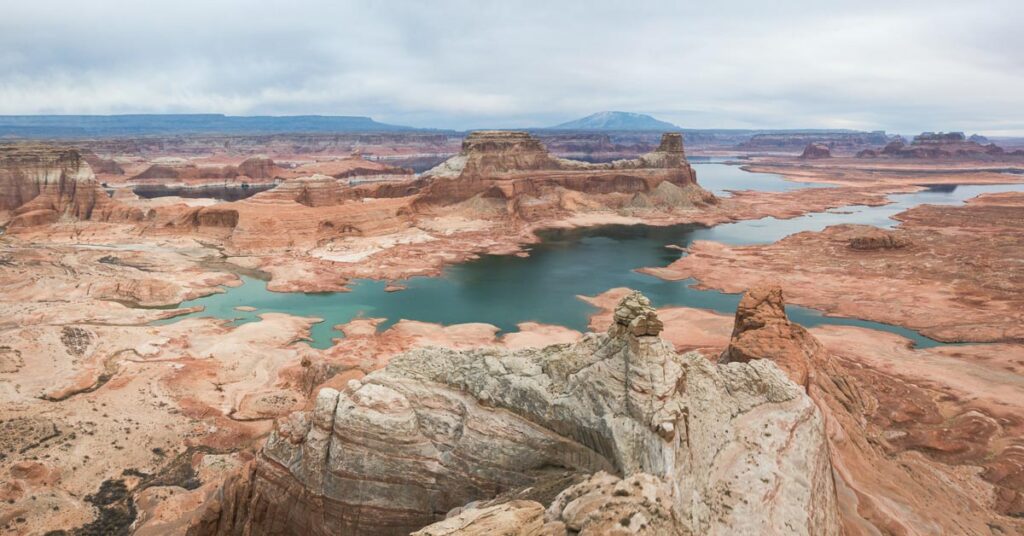
Lake Powell, in northern Arizona’s Glen Canyon National Recreation Area, is actually artificial, created by the damming of the Colorado River. It’s a popular watery oasis of majestic sandstone canyons and blue waters.
Don your swimsuit and hop in the lake for a nice swim, take a boat or kayak to hidden hikes and slot canyons, cast off with some fishing gear, or wakeboard across its serene surface – endless fun awaits at this reservoir! And if that isn’t enough of an adventure for you, you can actually boondock camp along its shores beneath starry skies.
9. Saguaro Cactus
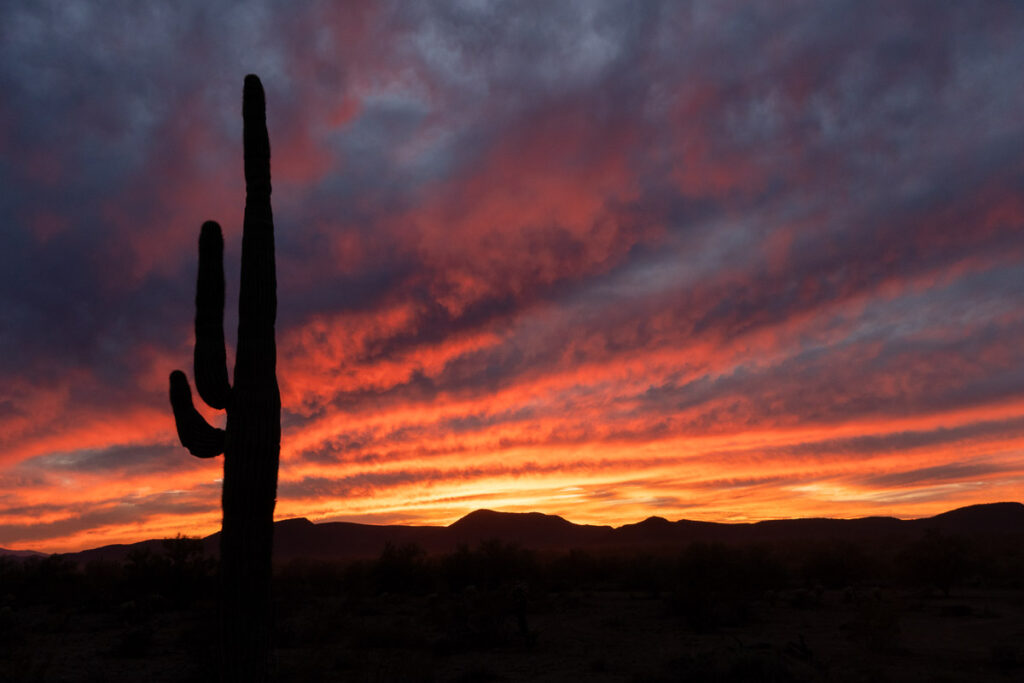
Did you know Arizona is home to the world’s largest cacti, the Saguaro Cactus? Rising from the Sonoran Desert and reaching an average height of 40 feet, the state even made a National Park out of it located just outside Tucson.
Standing tall and proud, the saguaros are a defining feature of both sections of this national park—not to mention an essential habitat for hundreds of species. Moreover, these incredible plants have inspired many Native American creation stories.
Careful where you step! Saguaros are extremely slow growing; research shows that they only reach 1-1.5 inches tall in the first eight years of life! They also only exist in Arizona, and the deserts of California, and northern Mexico.
10. The Red Rock Formations of Sedona
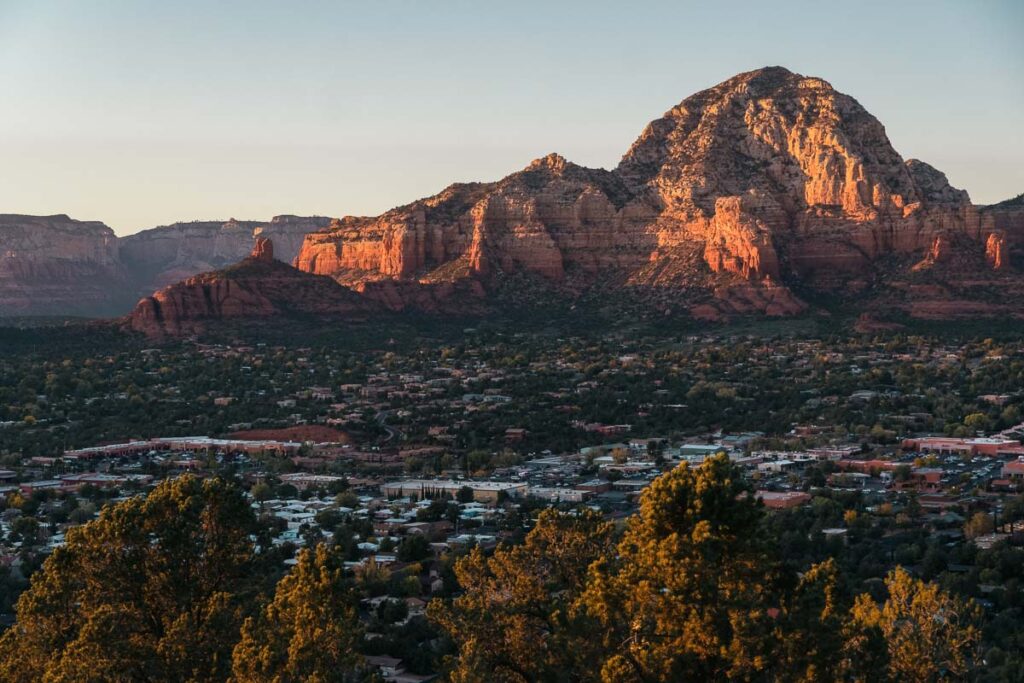
The Red Rocks in Sedona have long been considered sacred ground by many Native American tribes. Even to this day, the area is renowned as a spiritual vortex, or a special spot where energy is either entering into the Earth or projecting out of the Earth’s plane. Visitors flock here for spiritual healing and energy work or just to enjoy the unparalleled vistas.
Explore various trails throughout the area, such as Cathedral Rock, Devil’s Bridge, or Bell Rock. Or, if you are feeling extra adventurous, try adventure activities such as canyoneering and rock climbing. For the faint of heart, check out the best jeep tours in Sedona.
Bump through the red rock canyons on an adventurous this best Sedona Jeep Tour on Outlaw Trail
11. Havasu Falls

Havasu Falls is a hidden paradise in the Grand Canyon, known for its cascading turquoise waters and red canyon walls. Havasu Falls are known as one of Arizona’s most popular tourist spots.
If you are able to get one of the coveted permits, it is a 10 mile hike one way, and you must stay for 3 days. But you are awarded camping under light pollution-free stars and swimming in its crystal waters.
Tip! Permits are required to visit Havasu Falls; acquiring one is no easy task. The Hualapai Tribe limits the number of visitors to the falls and only opens enrollment once a year. Check here for the next lottery.
12. Grand Falls
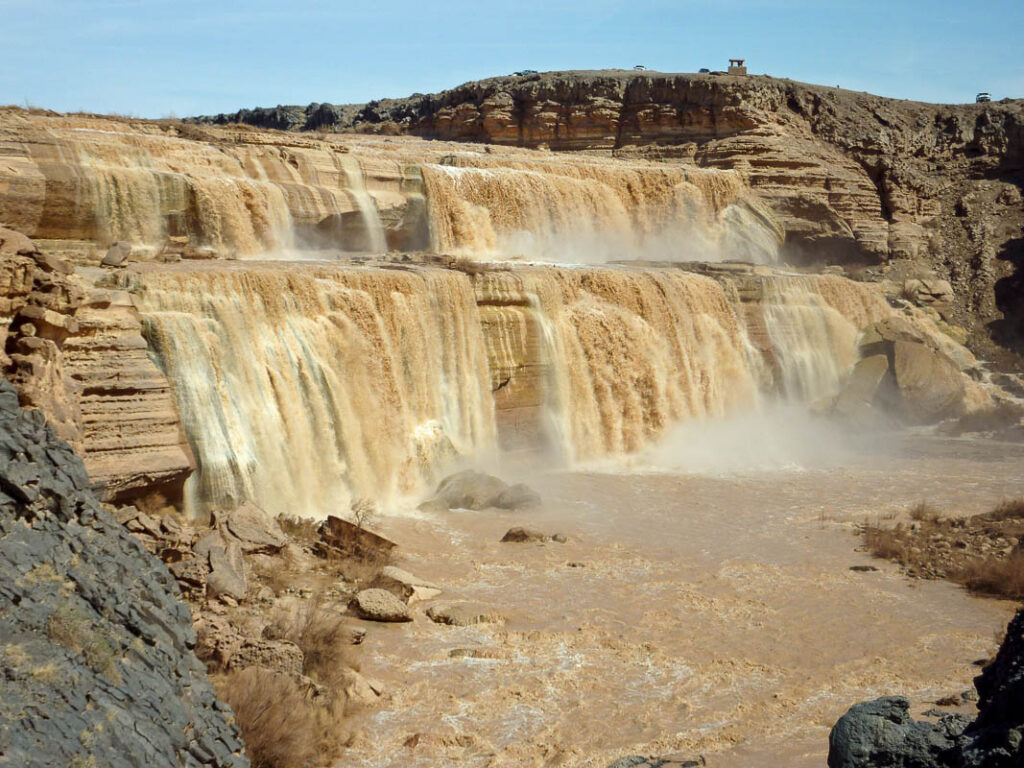
Would you ever guess that one of the driest places in America is home to an astonishing 181-foot waterfall? Don’t expect a classic, transparent cascade; think more along the lines of Willy Wonka’s Chocolate Factory – thick and brown.
If you are around in the right season, Grand Falls is a sight to behold. Its impressive array of tiers and expanded landscape are well worth an off-route detour that’s only thirty miles east of Flagstaff.
Tip! To view the majestic Grand Falls, aim to visit between March and April when nearby snowmelt and rainfall ensure a generous flow.
13. Meteor Crater
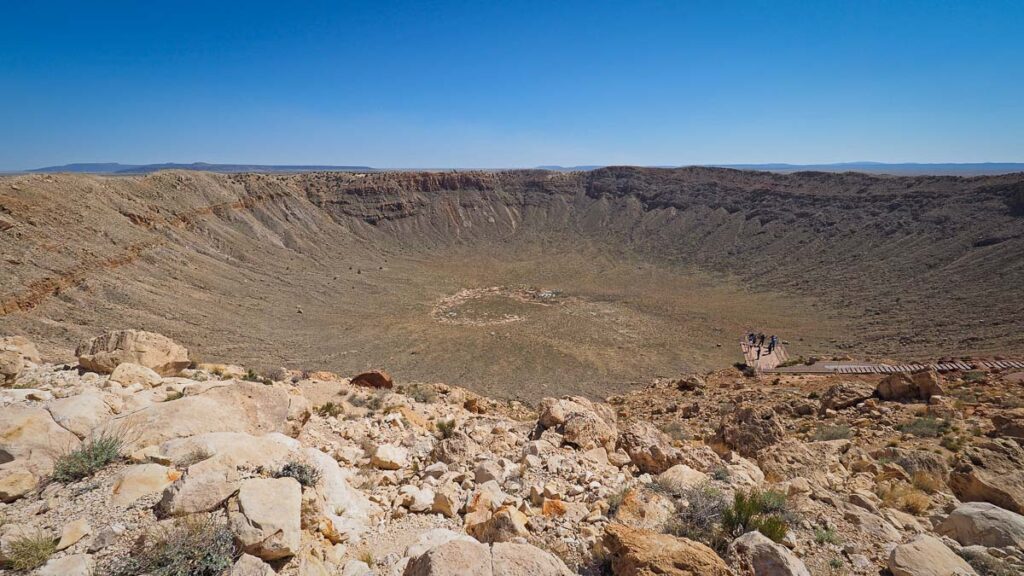
37 miles east of Flagstaff, lies the Barringer Meteor Crater – one of the world’s top ten largest impact craters. At first glance, this massive hole looks to be a canyon of a sort. But actually, around 50,000 years ago, an asteroid collided with Earth, creating a crater 3,900 feet (1,200 m) in diameter and 560 feet (170 m) deep.
Since the Meteor Crater is privately owned, tourists must pay for a guided tour on foot to enter the space museum and viewpoints.
Manmade Wonders and Architecture Arizona is Famous For
14. Taliesin West – Frank Lloyd Wright Home
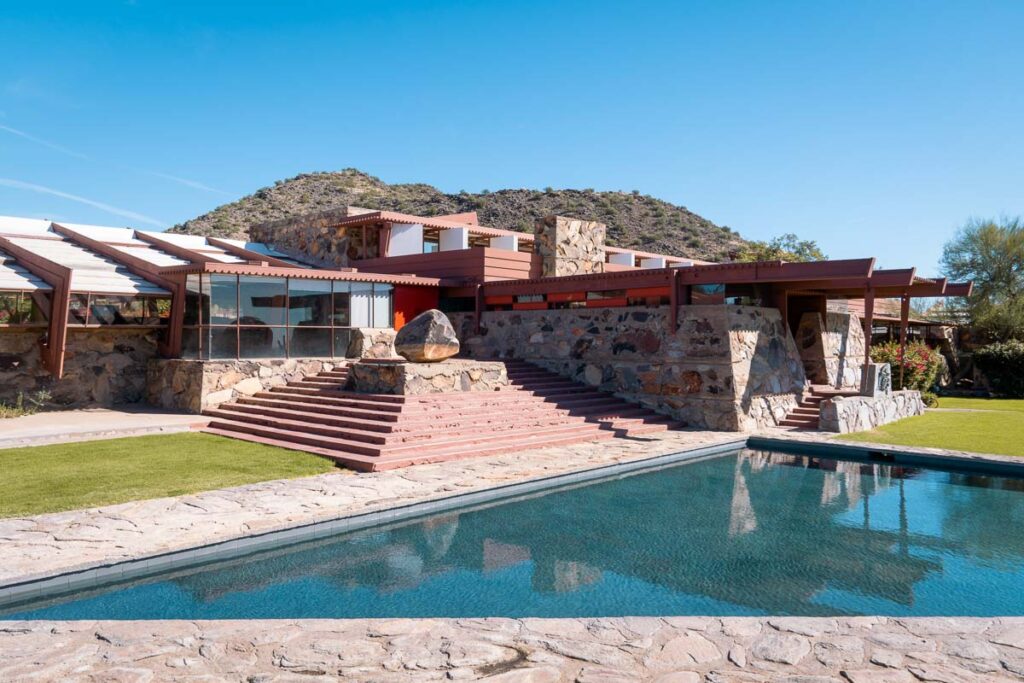
Tucked out in Scottsdale, Taliesin West isn’t your average home – and it doesn’t look like one either. Designed by architect Frank Lloyd Wright, “the father of modern architecture”, Taliesin West was built as a winter home and school.
A perfect example of organic architecture, the building comprises natural materials such as sandstone blocks and adobe mortar. The structure also has built-in elements such as overhangs and windows that blend seamlessly with its desert surroundings.
Guided tours allow guests to explore the home’s unique features, and special events are sometimes hosted by fellow artists.
15. Hoover Dam

Perched on the border of Arizona and Nevada, the Hoover Dam is one of the largest dam projects in the United States, and still stands as one of the most impressive feats of engineering. It was built in the 1930s to control flooding along the Colorado River and provide power for nearby populations. Today, it still provides power for millions and helps regulate water flow throughout much of Southern California.
Guests can take guided tours from this Las Vegas famous attraction and learn about its history, marvel at its sheer size from a series of observation decks, or even take a thrilling helicopter tour over the top!
16. Cold War Missile Base
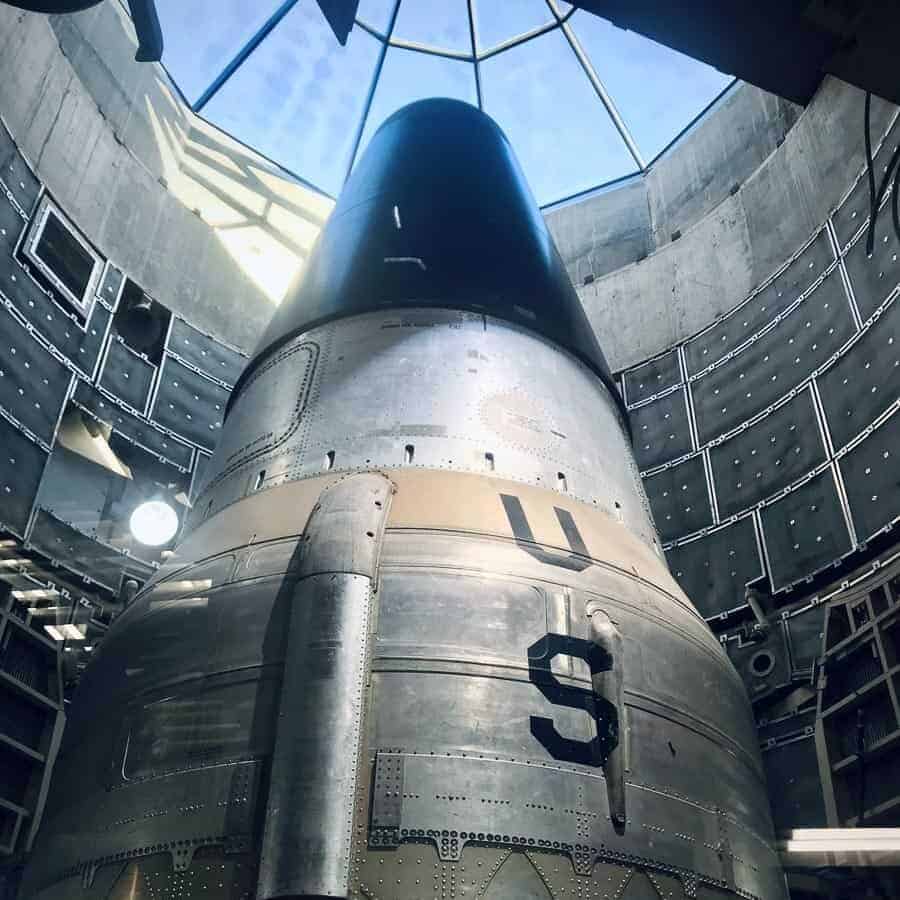
An intriguing piece of Cold War history still lives within Arizona, now known as the Titan Missile Museum. Located in the desert outside Tucson, this museum is a rare chance to explore a relic of our nation’s nuclear past.
Originally built as part of America’s Cold War defense system, the Titan Missile Museum is a fully-intact missile silo that holds an actual Titan II Intercontinental Ballistic Missile. Visitors can experience life within the facility during its active service and have the chance to see first-hand how nuclear missiles launch from underground silos.
17. The London Bridge
Believe it or not, Arizona is home to one of the most iconic bridges in the world: London Bridge! Originally built in the 1830s for the city of London, Robert P. McCulloch Jr. had the bridge cut piece by piece, then shipped it all the way to Lake Havasu City in Arizona.
Cities And Destinations Arizona Is Famous For
18. What is Phoenix AZ known for?
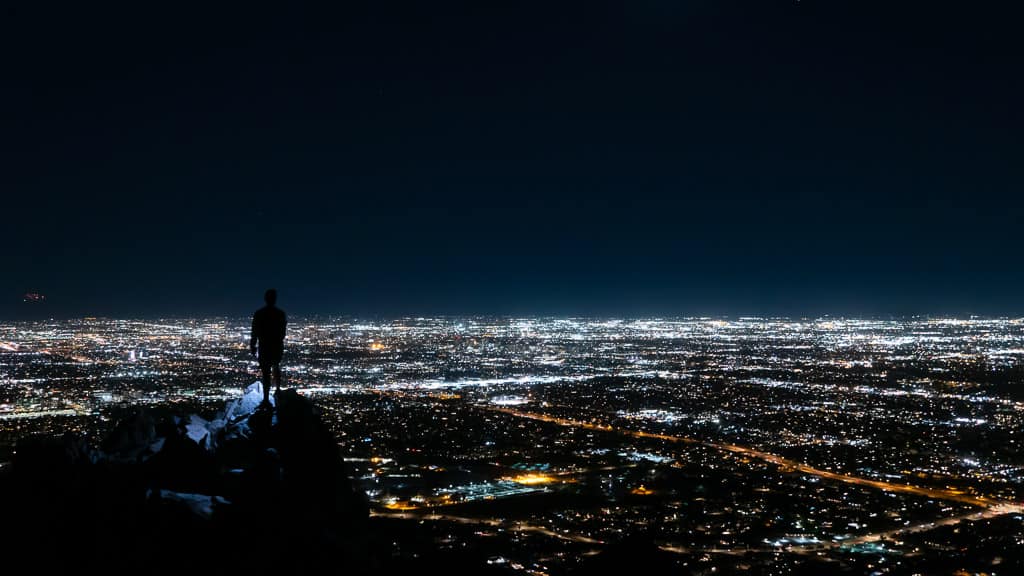
Boasting a population of over 1.4 million, Phoenix is the fifth biggest city in America. It is known as “The Valley of the Sun” due to its extensive year-round sunshine.
More than 500 square miles, this Arizona capital is even larger in area than Los Angeles! And if you take a glance at the map – cities and towns practically attached to Phoenix aren’t factored into this count.
So, whether you’re going for a regular girl’s trip to Scottsdale or just a first-time visitor to Phoenix, what should you do? Here are a few highlights from our road trip to showcase some of Phoenix’s best things to do.
- Start by visiting Old Town Scottsdale’s unique melding of traditional western vibes with modern-day flair.
- Head to Roosevelt Row Arts District for an amazing display of instagrammable Phoenix places including art galleries, graffiti murals, hip restaurants, and chic boutiques.
- Finally, grab your hiking shoes and climb Piestewa Peak in Phoenix Mountain Preserve – a challenging mountain peak right in the heart of the city!
19. What is Sedona AZ known for?
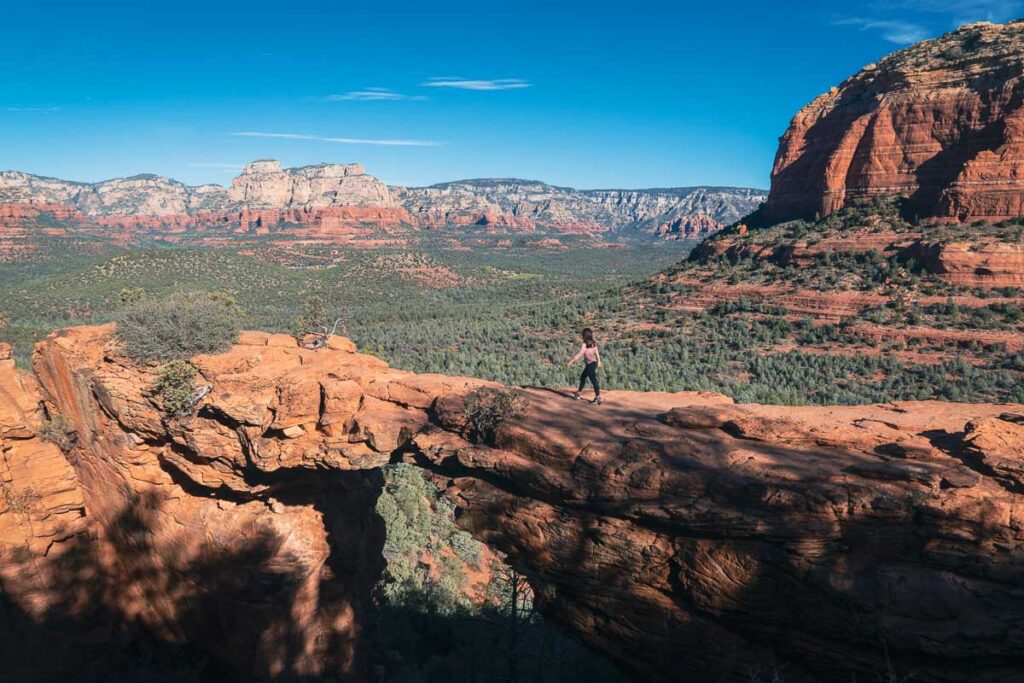
Despite having only 10,000 inhabitants, Sedona welcomes a whopping three million visitors each year, according to the Sedona Chamber of Commerce & Tourism Bureau. This vibrant small city is known for its striking red rock formations, incredible spiritual retreat healing, and vibrant art scene – making it one of the most beloved destinations in the state.
Many believe Sedona to be a spiritual vortex, a power center where Earth’s primitive energies exist. Sacred sites such as Cathedral Rock, Bell Rock, and Airport Mesa are popular destinations for meditation and spiritual inspiration and just plain pretty to look at.
Sedona is also home to an impressive number of art galleries that showcase everything from traditional Western artwork to contemporary abstracts. For outdoor enthusiasts, plenty of canyoneering trails and hiking routes dot this epic landscape. Plus, there’s no shortage of delicious restaurants to try too!
20. What is Tucson AZ known for?
Here’s a Tucson fun fact: The Saguaro cactus can only be found naturally growing within 70 miles from Tuscon, making this incredible creature one of only a few exclusive species native to Arizona!
Tucson is famous for its sunny climate, arid landscapes, cool city photo spots, and an escape for those looking to leave their wintery hell. The city’s unique position at the base of the Santa Catalina Mountains provides plenty of Southern Arizona opportunities for outdoor activities like hiking, mountain biking, golfing, and wildlife watching.
21. Four Corners
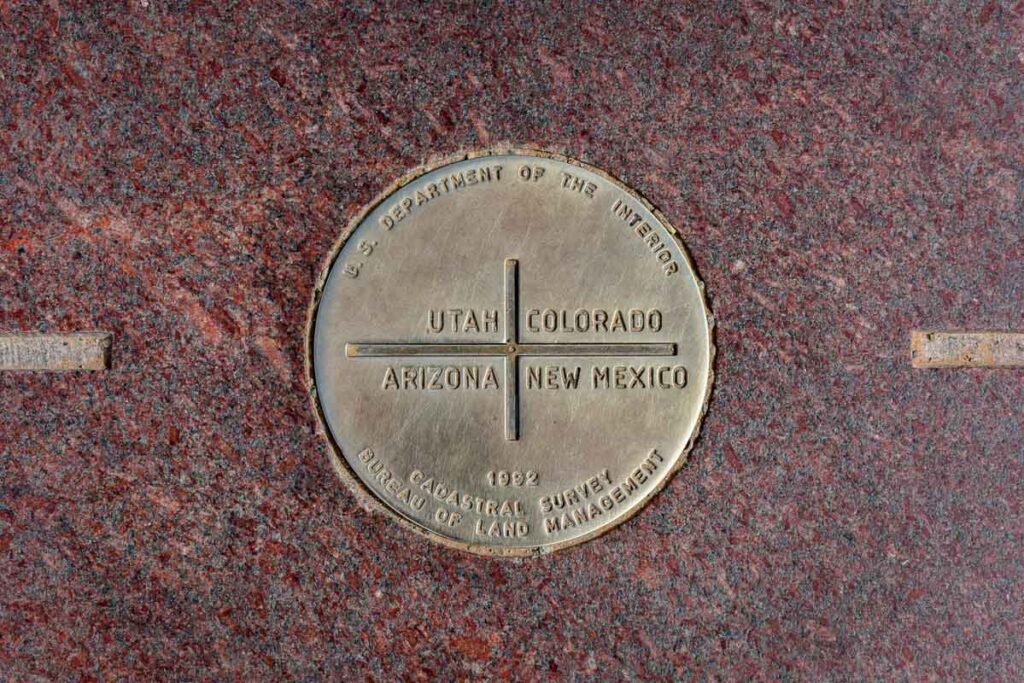
Exactly as it sounds, Four Corners is the only place in the United States where four states (Arizona, northern New Mexico, Colorado, and Utah) meet. Place each limb in a corner and snap the touristiest pic ever – not judging, I would do it too.
Located in the Navajo Nation, Four Corners Monument serves as a great starting point for other terrains like Monument Valley and Goosenecks State Park.
History & Culture Arizona Is Known For
22. Spanish Missions
At the beginning of the 17th century, Catholic missionaries from Spain arrived to the area that we now call Arizona. During this period, some of Arizona’s oldest Spanish missions were built, like San Xavier del Bac Mission and the Tumacácori National Historical Park.
23. Native American Culture
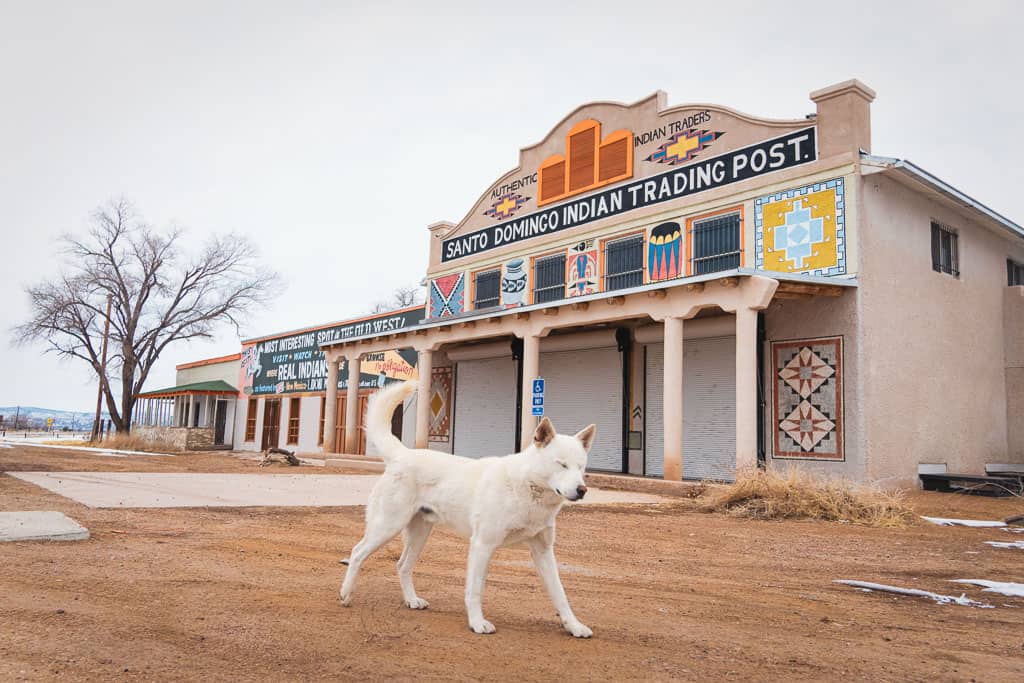
With over 20 federally recognized tribes, the state has some of the most unique indigenous cultures in the country. From the Apache to the Navajo, each tribe has its own traditions and stories, which can be seen throughout Arizona’s many cultural sites and attractions.
Learn more about these cultures by visiting one of Arizona’s Tribal Parks or joining in on a Powwows. This traditional gathering showcases tribal dancing, singing, drumming, and artistry. The Heard Museum in Phoenix is also a great place to learn more about Native American history and culture, with an impressive collection of artifacts, artworks, and exhibits.
24. The Wild West
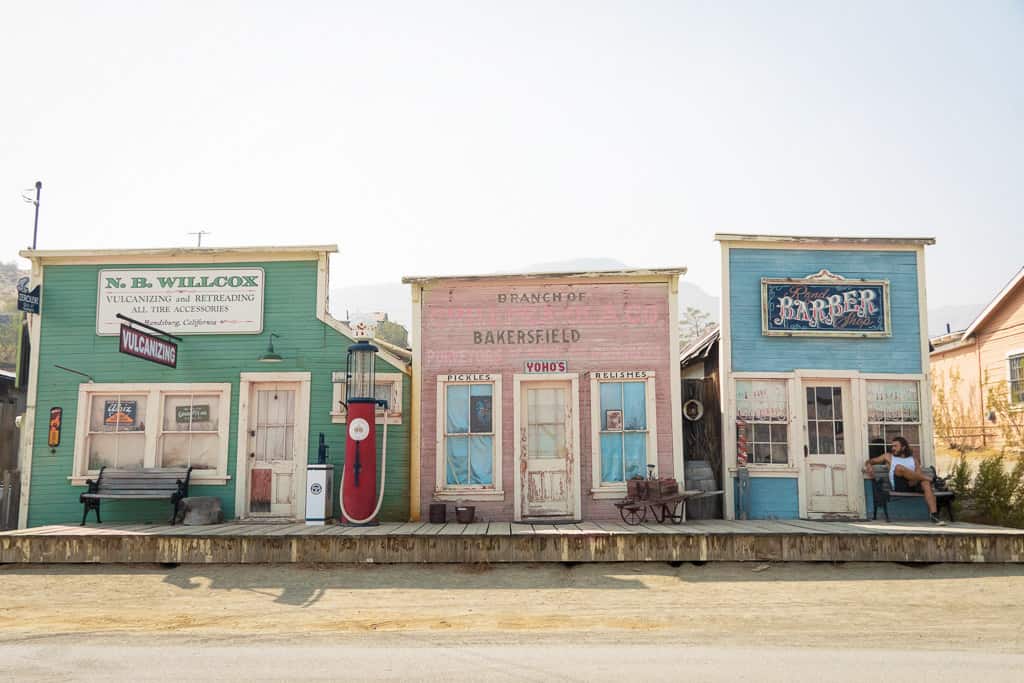
The west may not be as wild as it once was, but Arizona’s rugged frontier history is still alive today with the remnants of old mining towns and ghost towns.
The Tombstone Historic District is one of the best places to experience this history. Here, visitors can visit some of the most famous sites of that era, such as Boot Hill Cemetery and O.K. Corral. There’s even a Wild West gunfight show to give you a flavor of what life must have been like back then!
25. Turquoise Gemstone
In Arizona, many tribes have used turquoise for centuries in their jewelry and artwork. The Apache and Navajo tribes often used this gemstone in their ceremonies to represent peace and protection. Beautiful galleries throughout the state feature handmade turquoise jewelry from local artisans.
FAQs About Arizona
The Grand Canyon is the most famous thing and by far the number one attraction in Arizona. Every year, an estimated 5.9 million people visit this incredible natural wonder, making it the second most popular national park in the united states.
Some of the most famous people from Arizona include musicians Alice Cooper, and Stevie Nicks. Other renowned figures include actors Emma Stone and talk show host Jimmy Kimmel. Notable politicians include former Senator John McCain and Supreme Court Justice Sandra Day O’Connor.
Arizona is so popular due to its natural beauty, with landscapes like Grand Canyon and Monument Valley, combined with endless outdoor activities throughout the year, thanks to its warm desert climate. Additionally, many families enjoy visiting one of several acclaimed national parks – including Petrified Forest National Park or Saguaro National Park.
What makes Arizona beautiful are its fiery sunsets over desert plains, towering cactus-covered hillsides illuminated by starlight at night, rugged mountain foothills blanketed by bright green pine trees during springtime, or miles of sandy beaches along Lake Powell!
People vacation in Arizona for its wide variety of attractions ranging from national parks such as Saguaro National Park or Petrified Forest National Park to unique experiences like Tombstone or Native American historical sites or spa resorts for relaxation and golfing getaways!
Known as the “copper state,” copper products are one of the most famous products associated with Arizona – providing employment opportunities for local residents while making high-quality products used around the world.
The culture of Arizona encompasses many aspects, including Native American tribes, which have lived here since ancient times; Spanish settlers who first arrived in 1539; Mexican influence; plus modern western US culture predominantly rooted in Midwestern traditions like rodeo competitions!
Arizona food is known for its flavors featuring traditional dishes like tacos al pastor, carne adovada (pork marinated in red chile sauce), and green chilli stew enriched by more recent additions, including inventive fusion dishes combining European ingredients with New Mexican cuisine spices! Other famous dishes include, Piki Bread, Navajo Tacos, Posole, and Sonoran Hot Dogs.
Final Thoughts: What is Arizona Known and Famous For
Before visiting, you may ask yourself – “What is Arizona known for?” From its native American heritage to its national parks and architectural sites, Arizona is filled with famous things worth visiting and actually some of my favorite tourist attractions on Earth.
From stunning sunsets to epic slot canyons, here are a few places I wouldn’t miss in the state:
- Antelope Canyon
- Horseshoe Bend
- Grand Canyon
- Saguaro National Park
- Titan Mission Museum
- Havasu Falls (if you can get the permit)
- Sedona (Just all of it)
| TRAVEL RESOURCES |
| ✈️ Find the best tours and activities with Viator to cross off your bucket list and create unforgettable memories 🏘️ Book your accommodation with Booking.com in advance and check availability on the days of your travels. 🧾 Rent a car in advance with Discovercars for those epic road trips at the best price. |
Catherine Xu is the founder and author of Nomadicated, an adventure travel blog that helps travelers cross off their bucket list. Since discovering traveling in 2015, she has lived and journeyed to 65 countries across 5 continents and vanlifed the west coast USA for 2+ years. These days, she splits her time in Southeast Asia and California while sharing her travel stories and resources based on first-hand experiences. Catherine's other works has been referenced in major publications like MSN, Self, and TripSavvy.

